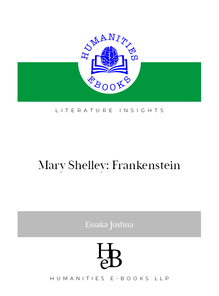-
 Univers
Univers
-
 Ebooks
Ebooks
-
 Livres audio
Livres audio
-
 Presse
Presse
-
 Podcasts
Podcasts
-
 BD
BD
-
 Documents
Documents
-
- Cours
- Révisions
- Ressources pédagogiques
- Sciences de l’éducation
- Manuels scolaires
- Langues
- Travaux de classe
- Annales de BEP
- Etudes supérieures
- Maternelle et primaire
- Fiches de lecture
- Orientation scolaire
- Méthodologie
- Corrigés de devoir
- Annales d’examens et concours
- Annales du bac
- Annales du brevet
- Rapports de stage
La lecture à portée de main
113 pages
English
Découvre YouScribe en t'inscrivant gratuitement
Je m'inscrisDécouvre YouScribe en t'inscrivant gratuitement
Je m'inscris
Obtenez un accès à la bibliothèque pour le consulter en ligne
En savoir plus
En savoir plus
113 pages
English
Obtenez un accès à la bibliothèque pour le consulter en ligne
En savoir plus
En savoir plus

Description
This book offers a pedagogical analysis of Shakespeare's complex and controversial play in its Elizabethan and modern contexts.
Sujets
Informations
| Publié par | Humanities eBooks |
| Date de parution | 11 janvier 2021 |
| Nombre de lectures | 0 |
| EAN13 | 9781847600998 |
| Langue | English |
Informations légales : prix de location à la page 0,0200€. Cette information est donnée uniquement à titre indicatif conformément à la législation en vigueur.
Extrait
Literature Insights General Editor: Charles Moseley
William ShakespeareThe Merchant of Venice
Boika Sokolova
“… How shalt thou hope for mercy, rendr’ing none?…”
HEB☼FOR ADVICE ON THE USE OF THIS EBOOK PLEASE SCROLL TO PAGE 2
Copyright
© Boika Sokolova, 2009
The Author has asserted her right to be identiîed as the author of this Work in accordance with the Copyright, Designs and Patents Act 1988.
First published byHumanities-Ebooks, LLP, Tirril Hall, Tirril, Penrith CA10 2JE
Readingt
*This book is designed to be read in single page view, using the ‘ît page’ command. *To navigate through the contents use the hyperlinked ‘Bookmarks’ at the left of the screen. *To search, click the magnifying glass symbol and select ‘show all results’. *For ease of reading, use <CTRL+L> to enlarge the page to full screen, and return to normal view using < Esc >. *Hyperlinks (if any) appear in Blue Underlined Text.
Permissions
Your purchase of this ebook licenses you to read this work on-screen. No part of this publication may be otherwise reproduced or transmitted or distributed without the prior written permission of both the copyright owner and the publisher. You may print one copy of the book for your own use but copy and paste functions are disabled. Making or distributing copies of this book would constitute copyright infringement and would be liable to prosecution. Thank you for respecting the rights of the author.
ISBN 9781847600998
Literature Insights General Editor: Charles Moseley
William Shakespeare: The Merchant of Venice
Boika Sokolova
HEB☼Humanities-Ebooks, LLP
The Author
Boika Sokolova is a Visiting Research Fellow at Birkbeck College, London. She teaches Shakespeare on the London programmes of the University of Notre Dame, the University of California and the British American Drama Academy (BADA). Sokolova has published widely on Shakespeare, performance and Shakespeare’s reception in Europe. Her latest book (co-authored) isPainting Shakespeare Red.An East-European Appropriation(Newark: University of Delaware Press, London: Associated University Presses, 2001).
Contents
Preface
1. Shakespeare: his Life, his Schooling, his Theatre 1. 1. Life 1.2. Shakespeare’s Schooling 1. 3. Shakespeare and London’s Theatre Business 2. The Merchant of Venice in Context 2. 1. Genre 2. 2. Shakespeare’s Venice, Shakespeare’s London 2.3. Foreigners in Venice and London 3. Act 1: The Embarrassment of Riches 3. 1. Act 1, Scene 1: Venice, Venetians, Antonio, Bassanio 3. 2. Act 1, Scene 2: Portia’s Belmont 3. 3. Act 1, Scene 3: Shylock’s Venice 4. Act 2: Confusions and Exclusions 4.1. Morocco and Arragon 4.2. Jessica’s Elopement, Lorenzo, Venetians 4.3. Lancelot, the Subversive Fool 4.4. Expunging Otherness 5. Act 3: Loss and Gain 5. 1. Act 3, Scene 1: Xenophobia, Flesh, Blood and Rings 5. 2. Act 3, Scene 2: Caskets and Cultural Codes; Love and Money 5.3. Jessica and Xenophobia
6
Shakespeare:The Merchant of Venice
6. Act 4, Scene 1: Trial and Tribulations 6.1. Venetians at Court: Law and ‘Ancient Malice’, Shylock, Antonio, Bassanio 6.2. Portia: ‘The quality of mercy’ Venetian style 6.3. Portia: Rearranging Emotional Hierarchies 7. Act 5, Scene 1: The Gardens of Belmont 7.1. Jessica and Lorenzo 7.2. Rings and ‘Parchment Bonds’ 8. A Very Brief Survey of Performance and Criticism
9. Suggestions for Further Reading, Filmography Recent Editions Performance Criticism Criticism Filmography
Preface
The Merchant of Venice(1596) is one of Shakespeare’s most popular plays, with a continuous stage life of over four hundred years. It is also a controversial and complex text which, for the modern reader or playgoer, grapples with painful questions of anti-Semitism, xeno-phobia, identity, race and gender, woven around a story about love, marriage and friendship, mercy and justice. For a long time the play has created unease, even distaste. Especially after the mass extermi-nation of Jews in the Second World War, history itself has added to that reaction and caused its banishment from schools and theatres in some parts of the world. So it is necessary, right from the start, to face up to a major problem—that of the play’s alleged anti-Semitism. To begin with, we should distinguish between the culture of the time when a text was written and the way it sits in a different, in this case, modern context. The term,anti-Semitism, as understood nowadays, th dates back to the 19 century and conceptually‘differs from the anti-Jewish ideas and theories which pre-dated the rise of racial theory in the 1850s in that it identiîes Jewish characteristics as congenital, rather than as speciîcally religious or broadly cultural (and, there-1 fore, capable of rejection by individual Jews)’. The Elizabethans would not have understood modern anti-Semitism (it would have made Shylock’s conversion devoid of meaning), nor does the play ever suggest that the hero is different from other characters, except in his religious and economic ideas. He is a ‘misbeliever’ (1.3.108), whose faith is ‘righted’ in the end, but he is also a character whose humanity is asserted in the strongest of terms as equal to that of the Christians. This does not mean that old religious anti-Semitism gave Jews advantages or relieved them of pressures and humiliation. In fact, religion was used as an argument for their banishment from England http://www.answers.com/topic/anti-semitism
8
Shakespeare:The Merchant of Venice
in 1290. In the play, we înd an intolerant society, but presented so that the audience is invited to question its verities, the limitations of its justice, the moral ambiguity involved in checking the powers of non-Venetians under the guise of objectivity; we are made to observe and think about the fundamental similarity of disaster incurred by blending extreme religious positions with everyday grudges by both Christians and Jews. While anti-Jewish sentiments had their provenance in Biblical texts and a long European history of intolerance during the Middle Ages, it is also of interest that after theReformation, the period to which the play belongs, in the new historical reading of Scripture byProtestanttheologians, Jews were considered redeemable and were viewed as a link in the divine plan of salvation. However, they had to be con-vinced to change their views by intellectual debate.Approached from this angle, the conversion imposed on Shylock could have been felt by some in the Elizabethan audience as questionable. Throughout the th th 15 and 16centuries the forced change of religion was an accepted method of erasing difference and the awareness of its painful edge was alive in the culture. In the south-eastern parts of Europe, occu-pied by the Ottomans, Christians were forced into Islam; at the other end, in Spain, both Muslims and Jews had been pressed into a mass conversion to Christianity. The English themselves had lived through the religious cataclysm of the Reformation with the consequent trauma on those who had wished to preserve their Catholic faith. Though presented as an act of mercy, Shylock’s unwilling change of religion would not have been seen by all as a happy end, a reaction strengthened by the fact that the play compounds it with a punitive legal judgement. th The 16century saw the gradual emergence of a what we might rec-ognise as a modern sense of English national identity, which played itself on the London stages in various ways, one being an interest in national history (Shakespeare’s History plays are a major contri-bution to the national debate). Another way of deîning the ‘self’ is through the ‘other’. Elizabethan plays abound in foreigners: a few of them are Jews, covering the entire spectrum from the generous and upright man ofRobert Wilson’sThe Three Ladies of London(1584)
Shakespeare:The Merchant of Venice
9
to the grotesque villain ofChristopher Marlowe’sThe Jew of Malta(1589?), to Shakespeare’sThe Merchant of Venicewith its (1596) complex villain/victim living in a society whose principles and self-representations often seem questionable. While it cannot be denied that the play carries the historical bag-gage of the time when it was composed, which can be abrasive to modern sensitivities, we should not forget that we also carry later his-torical baggage of anti-Semitism and racism. Sometimes, contempo-rary performances cut the text to remove what might be regarded as potentially offensive. This is not new in the play’s history. An exam-ple of the opposite, tweaking the play so as to give maximum offence, is how in the 1930s Nazi anti-Semitic propaganda tried to appropriate it for its own ideological ends. To obtain the desired effect however, Nazi propagandists had to slash the text, because in its wholenessThe Merchant of Venice refuses to engage with extreme and simplistic agendas. We can continue by listing its resistance to generic descrip-tions, preconceived ideas of order, justice, etc. While it is the product of a culture which was religiously anti-Semitic, the great strength of Shakespeare’s play is that it inexorably undermines attempts to deîne unambiguously its position vis-à-vis its culture. It could have been written so as to take sides, produce a straightforward moral reading, capitalize on social prejudices, or refute them, but it does not. The play exhibits the same evasiveness in the hands of modern directors and, where it comes to literary criticism, the brief survey at the end of this book shows how radically different views have been upheld by different generations of scholars in the course of almost three hun-dred years. By the same token, the question, ‘How shalt thou hope for mercy, rend’ring none?’ (4.1.87), used as an epigraph to the present discussion of the play, though asked of Shylock, can be seen to apply to the moral positions of most characters. The purpose of this Insight is to open the play to its student as a multifaceted and challenging text. InThe Merchant of Venice, Shakespeare transforms the genre of romantic comedy to enable it to talk about darker matters; its language takes us from the exalted ide-alisms of love to the lowest kind of racist abuse; powerful characters representing opposing value systems clash, revealing the limitations
10
Shakespeare:The Merchant of Venice
of each point of view. Around the structure of the love story typical of comedy the play explores how societies work, how communities and individuals deîne and protect themselves, tests love against the realities of a materialistic society, shows the fundamental likeness of hard opposites, conjures up the irreducible complexity and ambi-guity of human behaviour. The play raises a number of moral ques-tions concerning the choice between ‘us’ and ‘others’, between the compromises involved in excluding or including them and the ethi-cal and intellectual difîculties the process entails.The Merchant of Veniceteases the audience through its strategies of evasion, through the denial of a îrm vantage point for securely assessing the positions it takes. It asks more questions than it ever resolves, thus making us face the realitywelive in, the beliefs we uphold, the hard uncomfort-able truths of our own present, so disturbingly recognizable in this historically remote narrative. In what follows, Chapter 1 deals with Shakespeare’s life, in par-ticular, with the nature of his schooling and the tradition of the Elizabethan theatre which formed and made possible his achieve-ment. Chapter 2 discusses the genre of romantic comedy and how Shakespeare re-modelled it in this play; it also delves into the con-th texts of 16 century Venice and London. The following chapters, 3, 4, 5, 6 and 7, closely analyse the text following the sequence of Acts and Scenes; the nature of the material in a particular section is sug-gested by sub-headings. Chapter 8 gives a bird’s-eye-view of major performance and critical trends. Chapter 9 contains an annotated list of suggestions for further reading and a îlmography of the most easily available versions of the play on DVD. Negotiating between a text and its Elizabethan and modern contexts is at the best of times beset by problems. To clarify how interpreta-tions alter, examples from performance have been included because the tradition of the stage best shows the dynamic of change within the context of a particular period. To reduce the number of refer-ences, I quote from only one source on performance history: Charles Edelman, ed.,The Merchant of Venice, Shakespeare in Production (Cambridge: Cambridge University Press, 2002); the list for further reading offers more sources of this kind.
-
 Univers
Univers
-
 Ebooks
Ebooks
-
 Livres audio
Livres audio
-
 Presse
Presse
-
 Podcasts
Podcasts
-
 BD
BD
-
 Documents
Documents
-
Jeunesse
-
Littérature
-
Ressources professionnelles
-
Santé et bien-être
-
Savoirs
-
Education
-
Loisirs et hobbies
-
Art, musique et cinéma
-
Actualité et débat de société
-
Jeunesse
-
Littérature
-
Ressources professionnelles
-
Santé et bien-être
-
Savoirs
-
Education
-
Loisirs et hobbies
-
Art, musique et cinéma
-
Actualité et débat de société
-
Actualités
-
Lifestyle
-
Presse jeunesse
-
Presse professionnelle
-
Pratique
-
Presse sportive
-
Presse internationale
-
Culture & Médias
-
Action et Aventures
-
Science-fiction et Fantasy
-
Société
-
Jeunesse
-
Littérature
-
Ressources professionnelles
-
Santé et bien-être
-
Savoirs
-
Education
-
Loisirs et hobbies
-
Art, musique et cinéma
-
Actualité et débat de société
- Cours
- Révisions
- Ressources pédagogiques
- Sciences de l’éducation
- Manuels scolaires
- Langues
- Travaux de classe
- Annales de BEP
- Etudes supérieures
- Maternelle et primaire
- Fiches de lecture
- Orientation scolaire
- Méthodologie
- Corrigés de devoir
- Annales d’examens et concours
- Annales du bac
- Annales du brevet
- Rapports de stage
Signaler un problème
YouScribe
Le catalogue
Le service
© 2010-2024 YouScribe




















